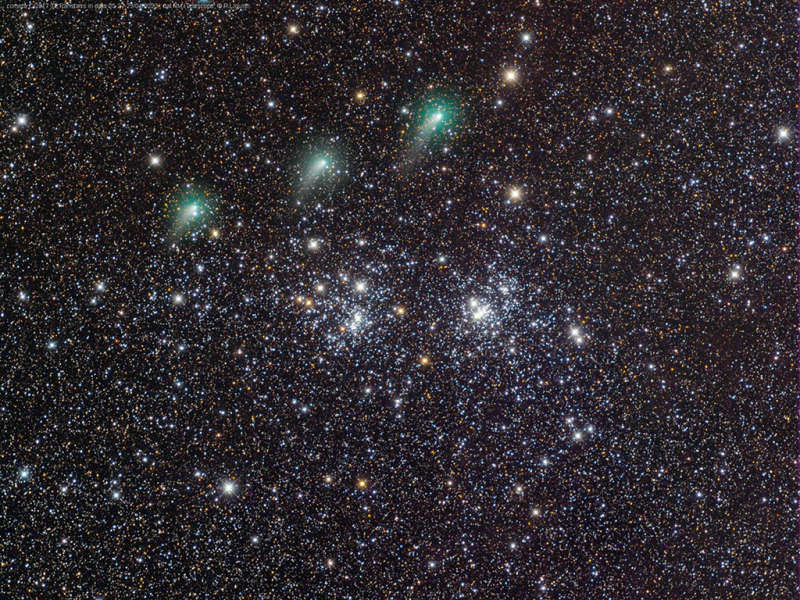Credit & Copyright: Rolando Ligustri
(CARA Project,
CAST)
Explanation:
This lovely starfield spans some four full moons (about 2 degrees) across the
heroic northern constellation of
Perseus.
In telescopic exposures made during the nights of January 24, 26, and 28
it holds the famous pair of open or galactic star clusters h and Chi Persei
with comet PanSTARRS (C/2017 T2) captured each night as it swept left to right across
the field of view.
Also cataloged as
NGC
869 (right) and NGC 884,
both star clusters are about 7,000 light-years away and
contain stars much younger and hotter than the Sun.
Separated by only a few hundred light-years, the clusters are
both 13 million years young
based on
the ages of
their individual
stars,
evidence that they were likely a product of the same
star-forming region.
Discovered in 2017 while still beyond the orbit of Saturn, Comet PanSTARRs is
a new visitor
to
the inner solar system and just over 13 light-minutes from planet Earth.
Always a rewarding
sight in binoculars,
the Double Cluster is
even visible to the unaided eye from
dark locations.
C/2017 T2
could remain a telescopic comet though.
One of the brightest
comets
anticipated in 2020
it makes its closest approach to the Sun in early May.
1999 2000 2001 2002 2003 2004 2005 2006 2007 2008 2009 2010 2011 2012 2013 2014 2015 2016 2017 2018 2019 2020 2021 2022 2023 2024 2025 |
Yanvar' Fevral' Mart Aprel' Mai Iyun' Iyul' Avgust Sentyabr' Oktyabr' Noyabr' Dekabr' |
NASA Web Site Statements, Warnings, and Disclaimers
NASA Official: Jay Norris. Specific rights apply.
A service of: LHEA at NASA / GSFC
& Michigan Tech. U.
|
Publikacii s klyuchevymi slovami:
open cluster - comet - Rasseyannoe skoplenie - komety
Publikacii so slovami: open cluster - comet - Rasseyannoe skoplenie - komety | |
Sm. takzhe:
Vse publikacii na tu zhe temu >> | |
